Recently Cleared Up Space on Mac Why Is It Full Again
When the message "Your startup disk is nigh full" appears on a Mac, about users go lost. Our back up team at Nektony got many emails from the users request how to fix the full startup disk mistake. So based on seven+ years experience in safely cleaning Mac from junk files, we've decided to write a comprehensive guide about Mac startup disk.
A startup deejay on Mac is a hard bulldoze's segmentation where macOS is installed. By default, the Startup Disk is the disk named "Macintosh HD" and the user'southward applications, files, and any data are too stored on this deejay. Y'all can change that name simply it would still exist the startup disk of your Mac.
The warning message indicating that your startup deejay is almost full appears when there is no longer enough free space on your disk. This is often due to having too many files occupying your Mac's difficult drive, bringing complimentary space to a dangerously depression level. To resolve this upshot, you need to free up some disk space.
Hither is the bulletin the users become when the startup deejay is total:
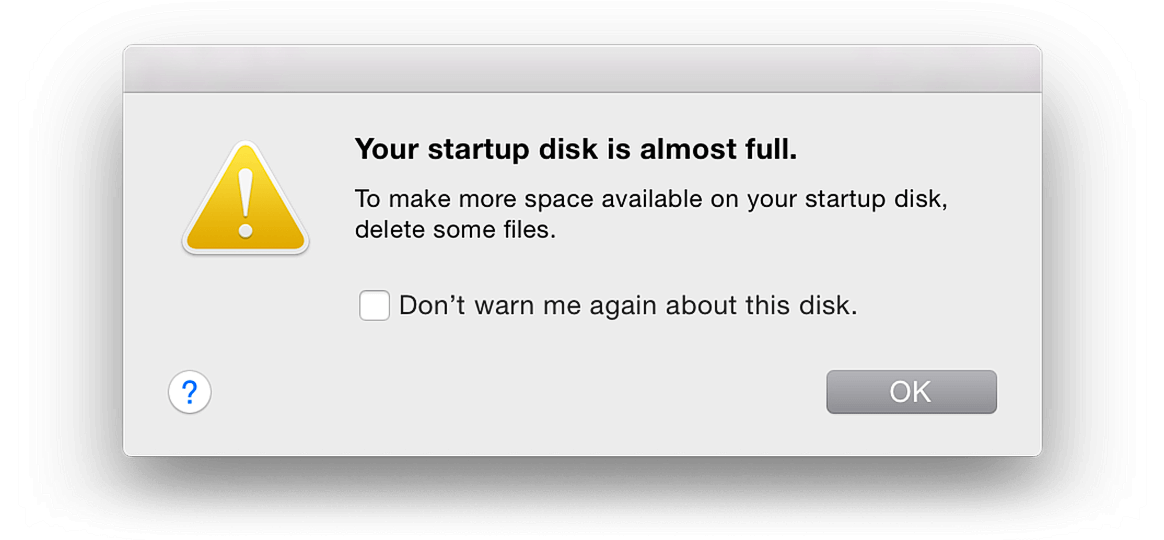
Since macOS Big Sur, the alert message about running low on disk space looks similar that: 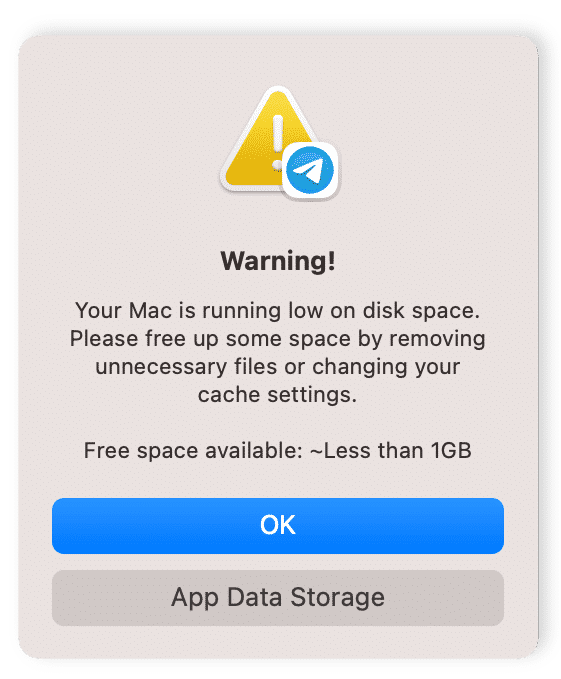
How does "Startup Disk Full" affect your Mac?
Lack of free space on the startup deejay leads to both unstable and slow performance of the macOS organization. Information technology tin also prevent applications from being able to launch or work properly, including suddenly crashing or simply ceasing to piece of work.
What to exercise if the startup disk is total on Mac
In general, when your Mac startup disk is total, yous demand to clean upwards your Mac and recover some space. For the macOS organisation to piece of work properly, y'all will need to gratuitous up from 10 to thirty Gigabytes by removing unneeded files.
Yous tin clear caches and other temporary files, uninstall unused apps, remove indistinguishable files and delete other junk on your Mac. This would free up much space on your deejay. You can either remove junk files manually or employ MacCleaner Pro to perform this task rapidly and easily.
Scout the video to see how easy it is to set total startup disk error with MacCleaner Pro.
Video Guide
Too, y'all should clarify your disk space usage and remove all unneeded digital stuff. For case, yous can upload some big files to the cloud or offload them to a backup disk, however, this approach requires you to have additional storage.
How to check startup disk on your Mac
Follow the next steps to run into what kind of files swallow your startup disk space.
- Click menu at the .
- Click the tab.
- Review the storage usage to see what files are eating up space.
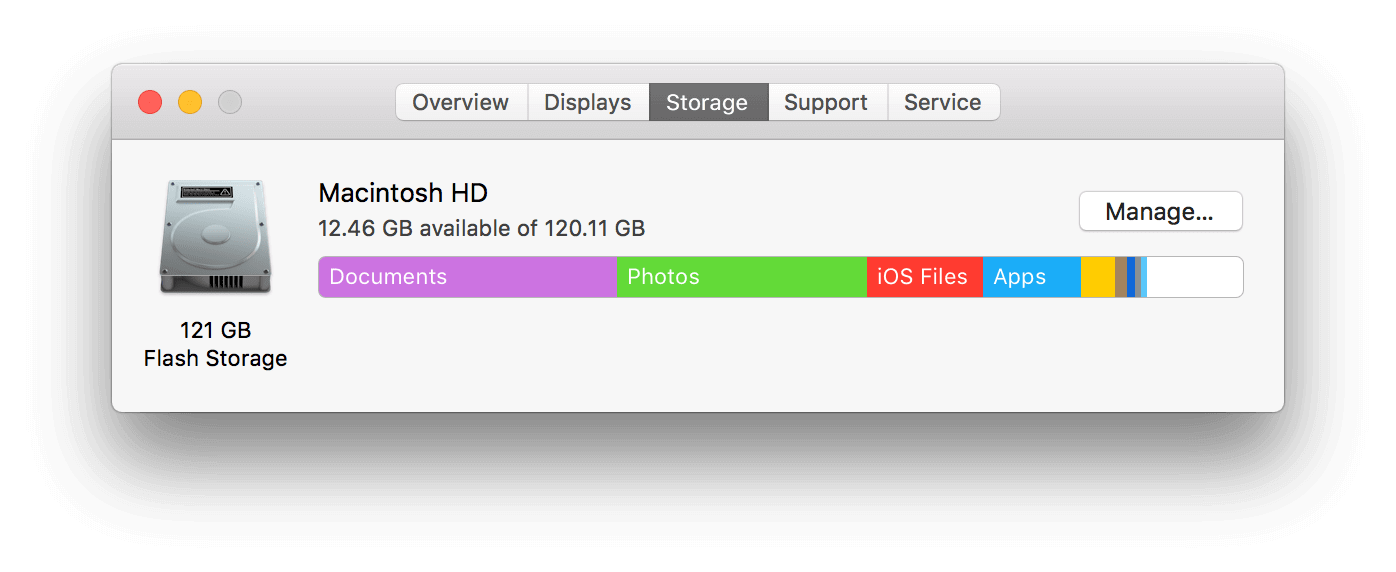
In that location are seven general categories of data stored on your Startup Disk. The larger the bar, the larger the space taken up by those types of files: Photos, Apps, Movies, Audios, Backups, Documents, and Other.
How to manage deejay infinite on Mac
On the storage usage panel, you tin can come across the Manage button. If you click it, the system will evidence you a window with recommendations on what y'all tin can do to optimize your storage:
- Store your files in iCloud.
- Enable the Optimize Storage choice which ways that the system will automatically remove movies and Television receiver shows that you have already watched from your Mac.
- Turn on the option to empty Trash automatically.
- Reduce ataxia which ways that you will have to review your big files and remove unneeded ones.
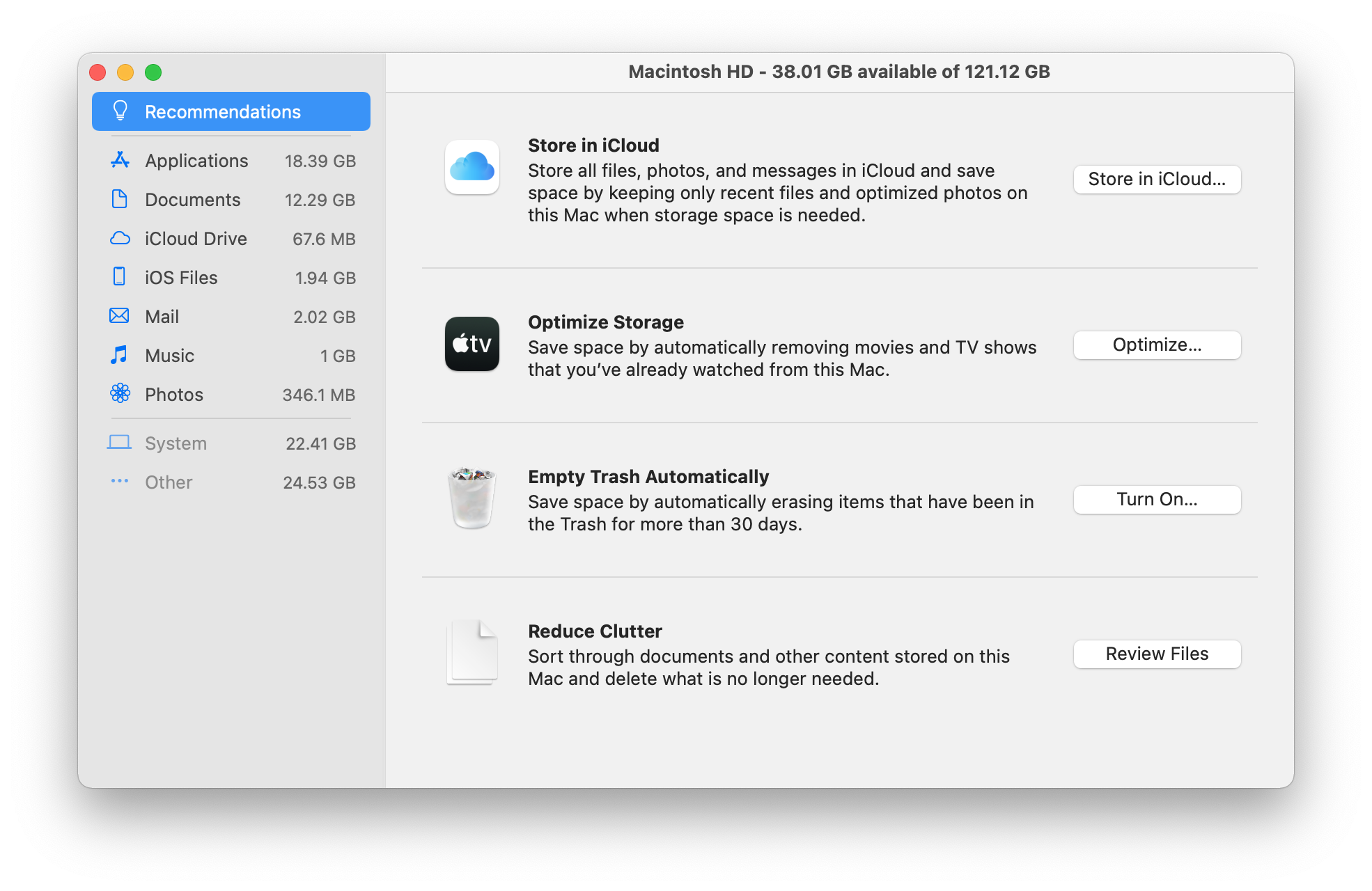
Also, in this window, you can run into what types of files and items take upward big space on your Mac: applications, iOS backups, music, photos, Mail, or documents. Usually, movies, pictures, or backups take up the most space. But it often happens that the biggest space eaters are the "Other" files, including caches, logs, cookies, archives, disk images, plugins, extensions and and then on.
Yous can remove unneeded files manually or use special software tools for quick and easy disk cleanup.
How to Clean upward Mac Startup Disk
1. Clear Enshroud
A cache file is a temporary data file created by apps, browsers, and many other programs to help your Mac run faster. Note that when you remove cache files, they volition be recreated the next fourth dimension y'all run the application. Even so, it'southward a expert idea to clear the cache from fourth dimension to time.
Apps you may no longer exist using, likewise as their leftovers, still remain in the Enshroud folder and occupy tens of gigabytes of your disk retentivity.
Cache files are stored in the Library folders, which y'all can observe in the following locations:
- /Library/Caches
- ~/Library/Caches
In /Library/Caches you will observe temporary files created past the organization. Commonly, these files don't occupy besides much space. However, in the ~/Library/Caches folder, y'all will meet a huge number of junk files, which are created when you lot run applications. As a result, this folder may increase substantially in size over fourth dimension.
By default, the Library folder is hidden on macOS, equally Apple keeps their organisation files and protects the files from adventitious removal.
Here is how to remove caches on Mac:
- Open up Finder.
- Go to the Menu Bar and click .
- Type ~/Library/Caches in the dialog box and click .
- You lot will run into the Caches folder where all applications store their cache files. Keep the Caches folder but delete the subfolders with applications' cache files.
Important! Enshroud files with an "apple" in the proper noun cannot exist deleted. Deleting such files may crusade a organization crash.
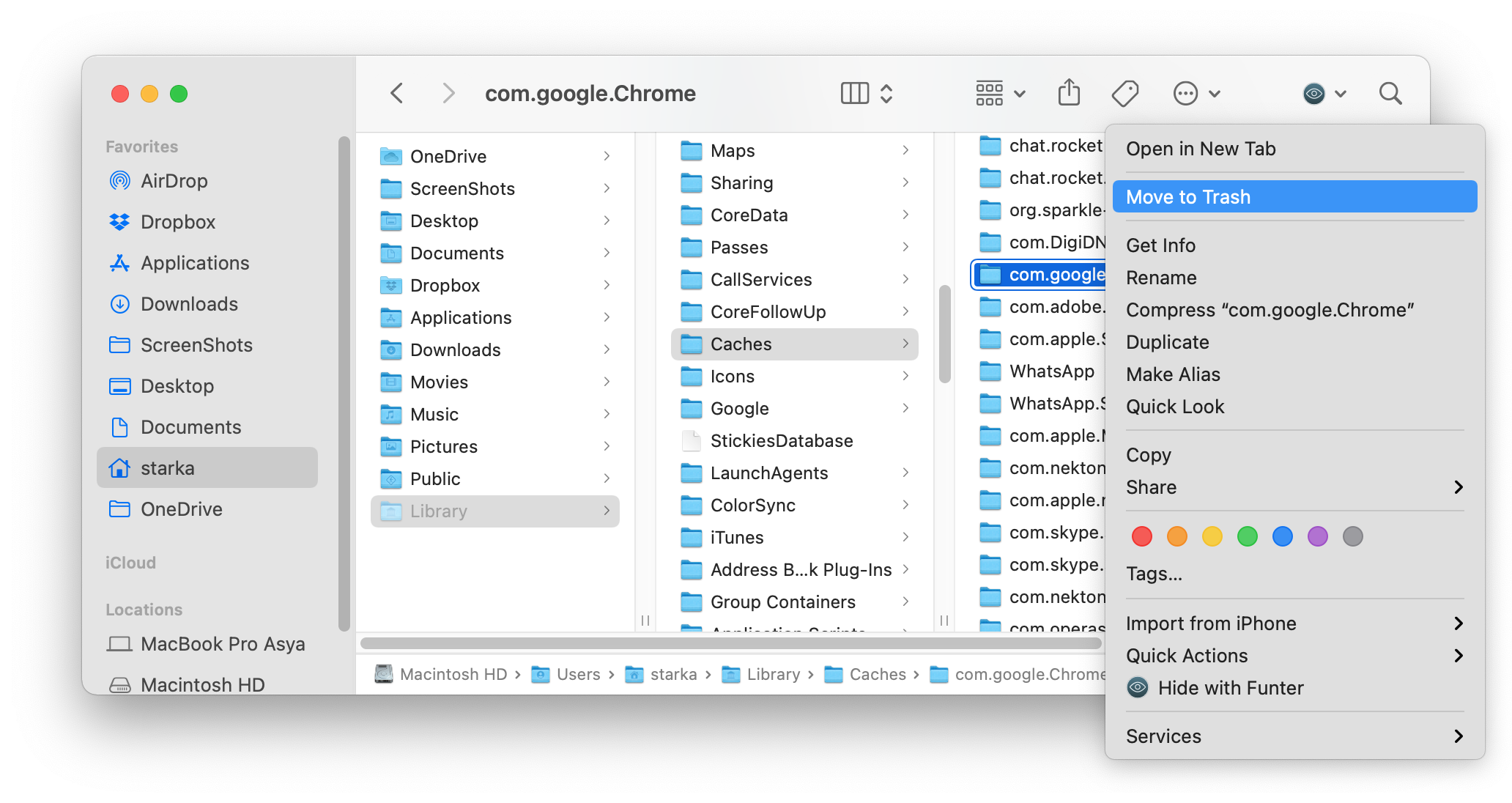
2. Remove Logs
While the Library folder is open up, you lot can likewise observe another blazon of temporary file – log files. They are stored in the Logs folder. Please brand sure that before you remove organization logs, apps, and mobile devices, you lot no longer need them.
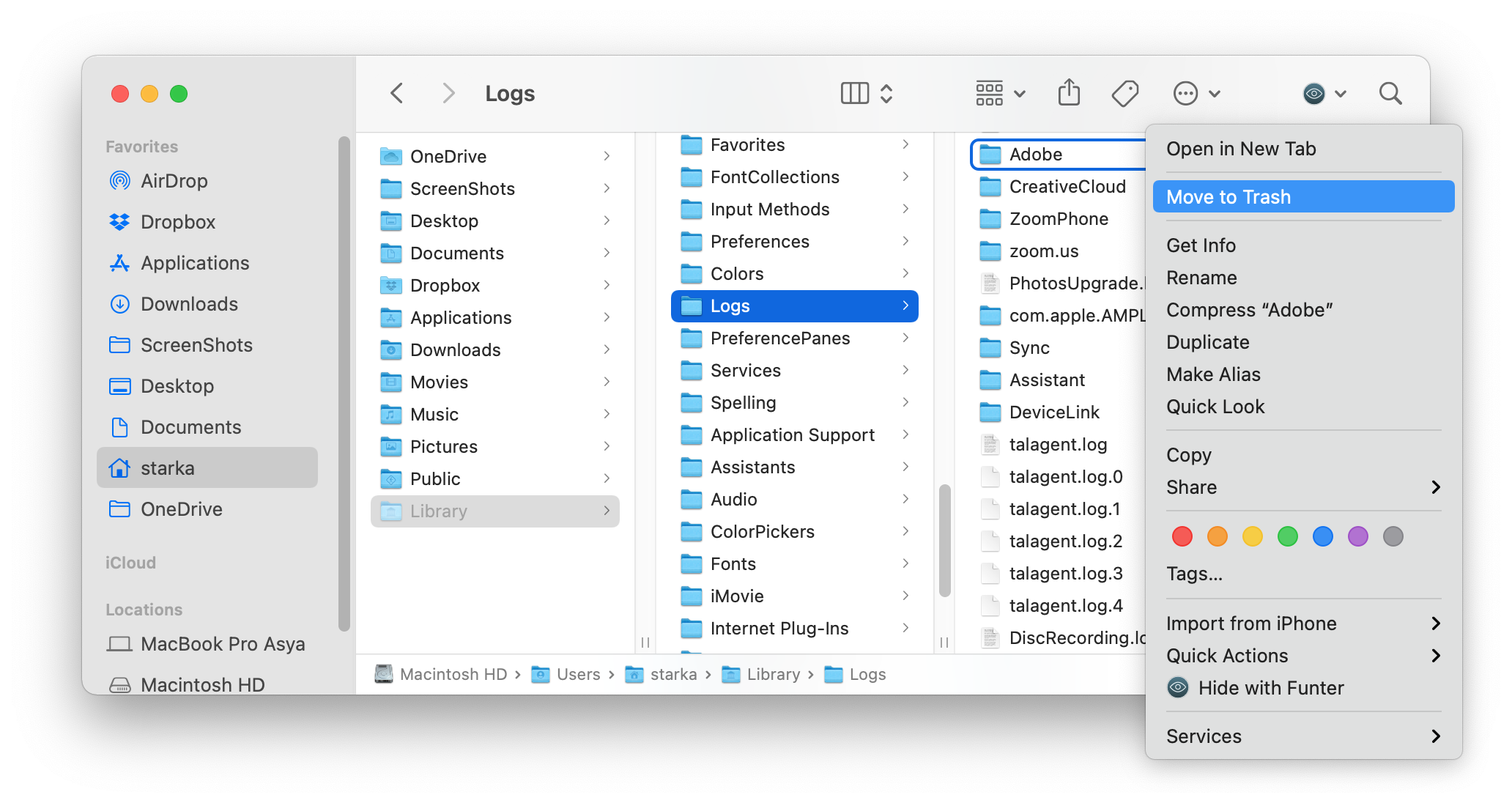
3. Remove Language Resources
Language Resources is the information stored past apps for different languages. Apart from English, lots of apps include languages such equally German, Chinese, French, Portuguese, Italian, Korean, Russian, Hindi, and others.
For example, Spotify has 54 languages. If you don't need all of these translations, yous tin can get rid of unneeded ones from within the Spotify Contents binder.
Here is how to find and remove unneeded language files of apps:
- Open the Applications folder → select an app (in our case it's Slack) → right-click on the app and select Show Package Contents.
- In the window that appears, select Resources and delete useless linguistic communication files. More often than not these files have the showtime 2 letters of a particular language and an .lproj extension.
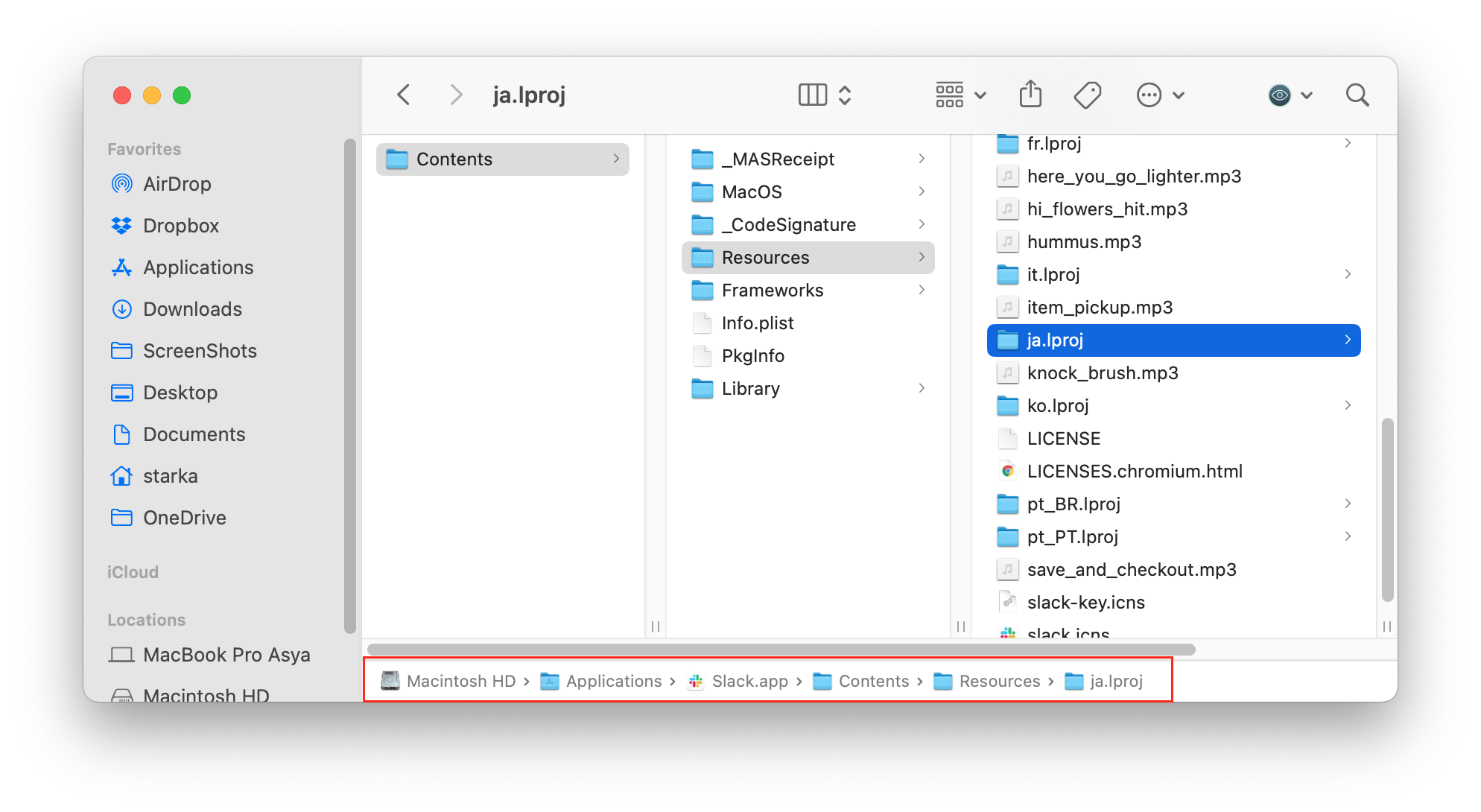
Using this method, yous can remove all unused languages in your applications. Be conscientious to just delete certain linguistic communication files, since deleting important application files can affect the app'south performance or even lead to a crash.
Note! English is the base language, so you should never delete it.
four. Delete Downloads
How many times have yous downloaded files from web browsers, messengers, torrents, and mail? When you download files from the Internet, past default they are saved in the Downloads folder, which can easily be found at this location:
/Macintosh Hard disk/Users/Current User/Downloads
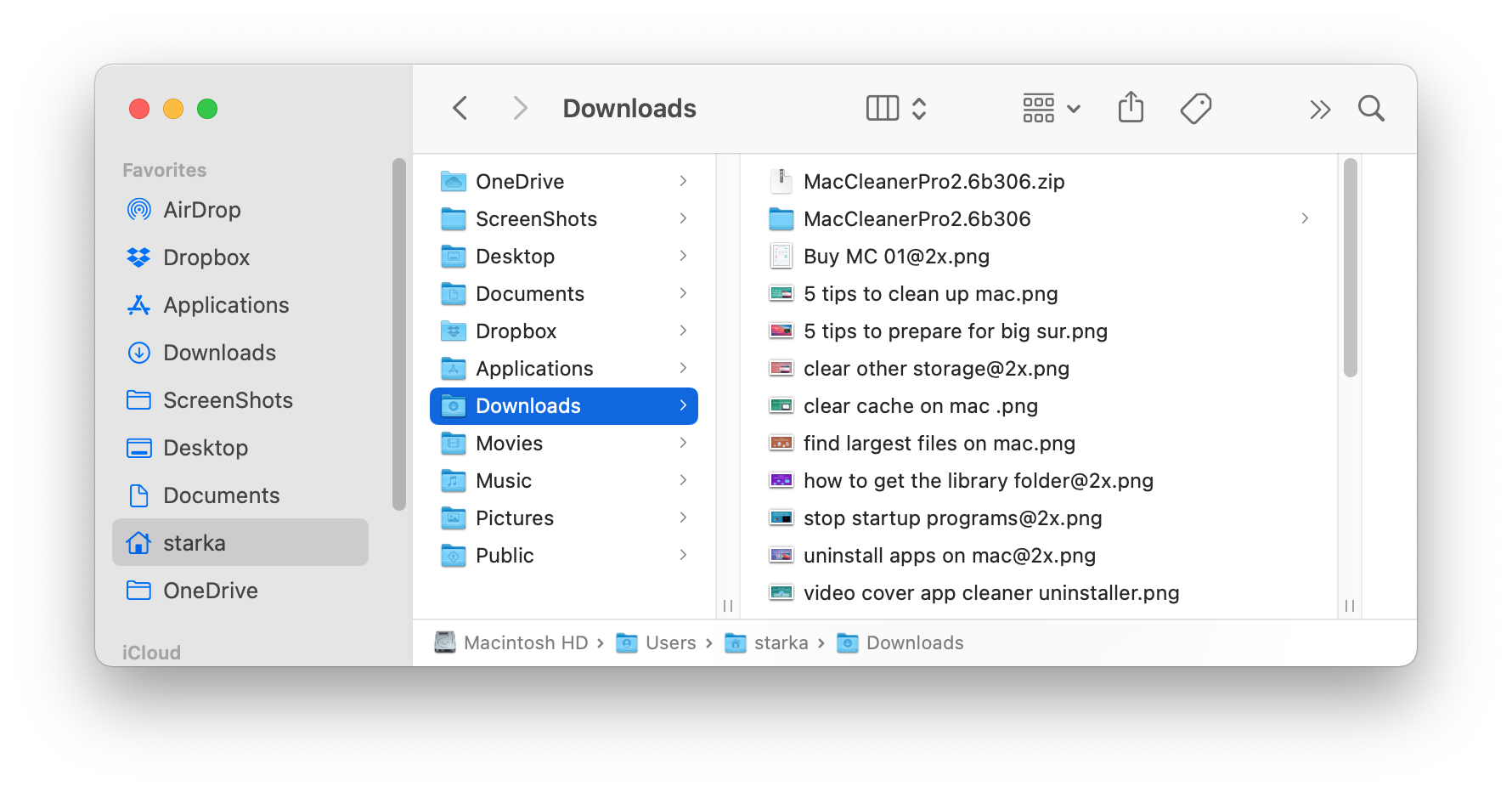
Co-ordinate to statistics, the average user accumulates 0.5 GB per week in the Downloads folder.
All of the files in the Downloads folder usually remain unorganized and may have upwards several Gigabytes of free space. While you may have needed to retrieve files very rarely, for example, installation files (deejay images), more than half the files in Downloads are not needed and should be deleted.
Sorting the list of files by size, kind, or date volition help you to rapidly find out which unneeded files you lot have and remove them.
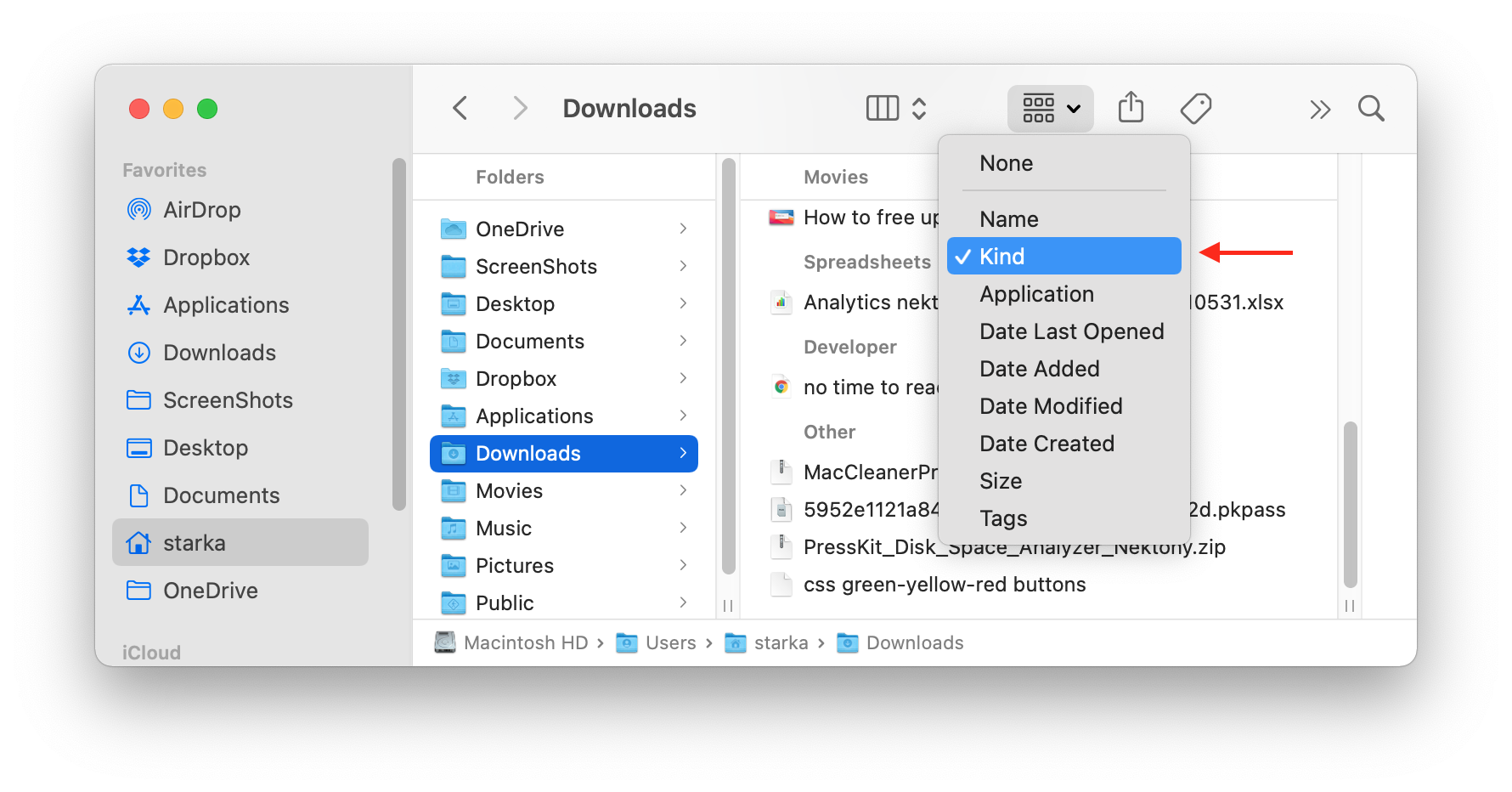
5. Delete Mail service Downloads
If you use the standard macOS Postal service awarding, the system saves them to a separate binder on your hard drive. Subsequently several months of using the mail client, the binder's size tin can grow upwards to several GB.
The easiest way to find this binder is to search via Spotlight. Just type "Mail service Downloads" in the search field.
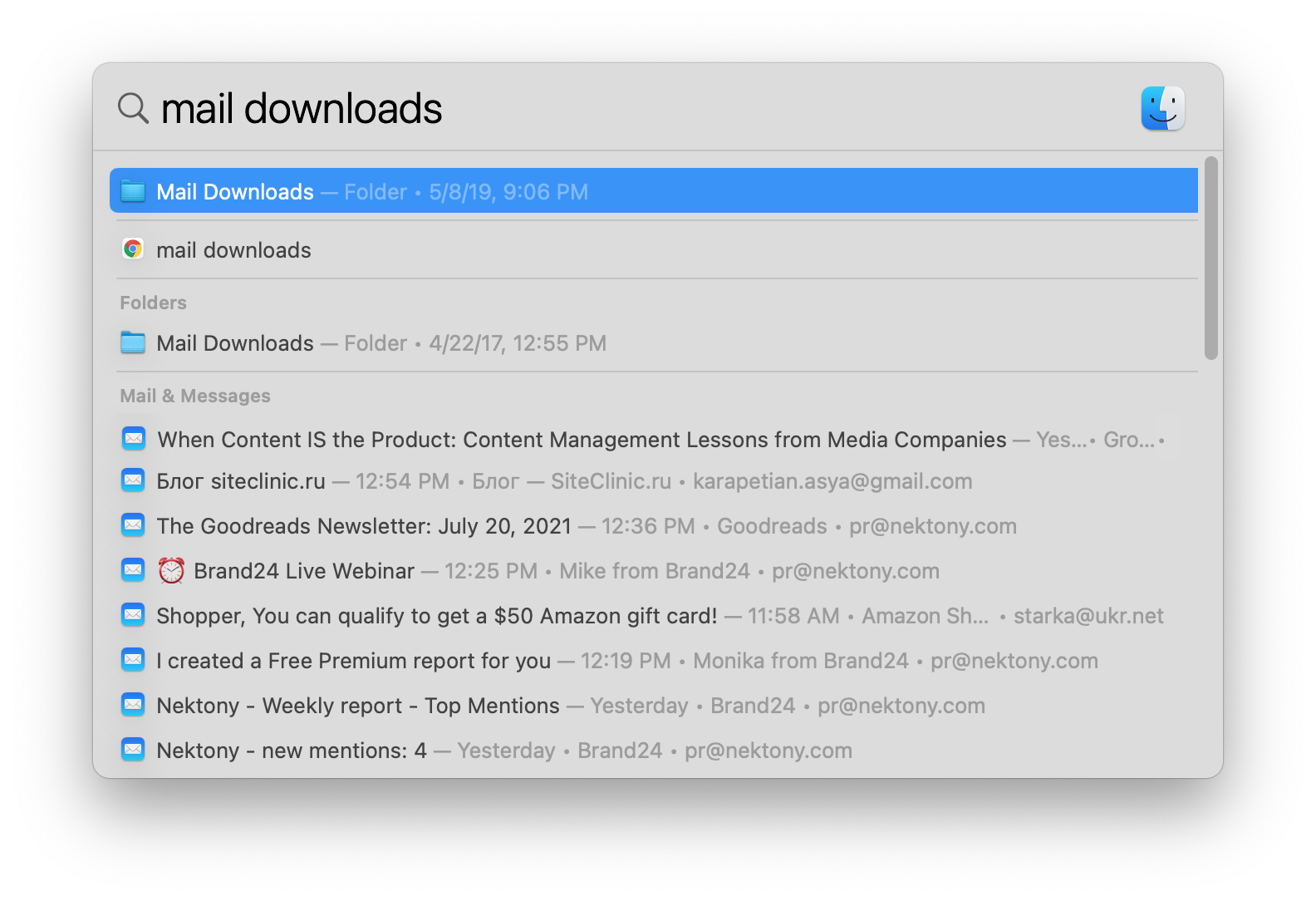
If this method didn't work, then open the Finder → printing Shift+Cmd+Grand key shortcut and in a search field enter:
~/Library/Containers/com.apple.post/Data/Library/Mail
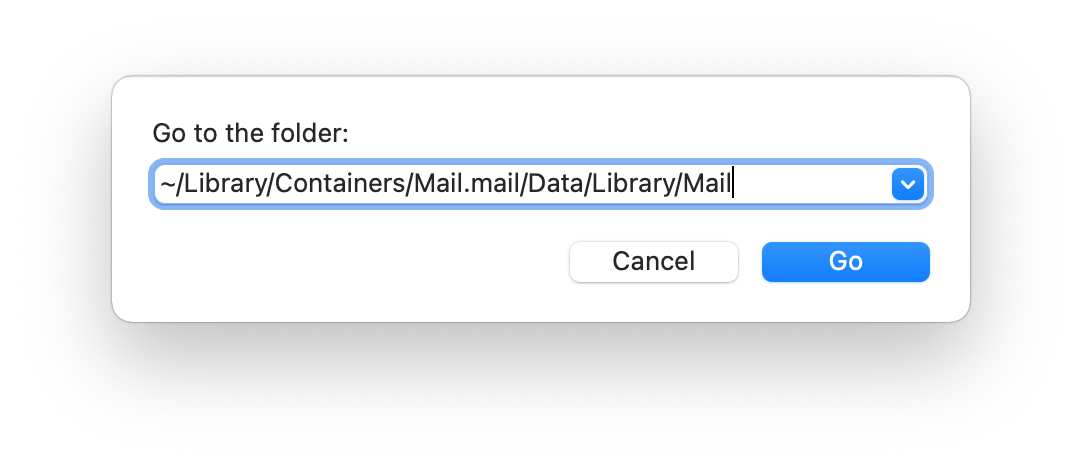
Preview the files and salve those that you need, or delete all the files at once.
6. Bank check Your Trash
It may sound elementary, but nosotros ofttimes delete files and forget to empty the Trash. The files in the Trash even so occupy your disk space, and then it is recommended that you empty the Trash folder at least in one case a week.
To delete files from the Trash folder permanently, right click on the in the dock panel and select . Some other style to complete this task is to open up the Trash and click the button in the top right corner.
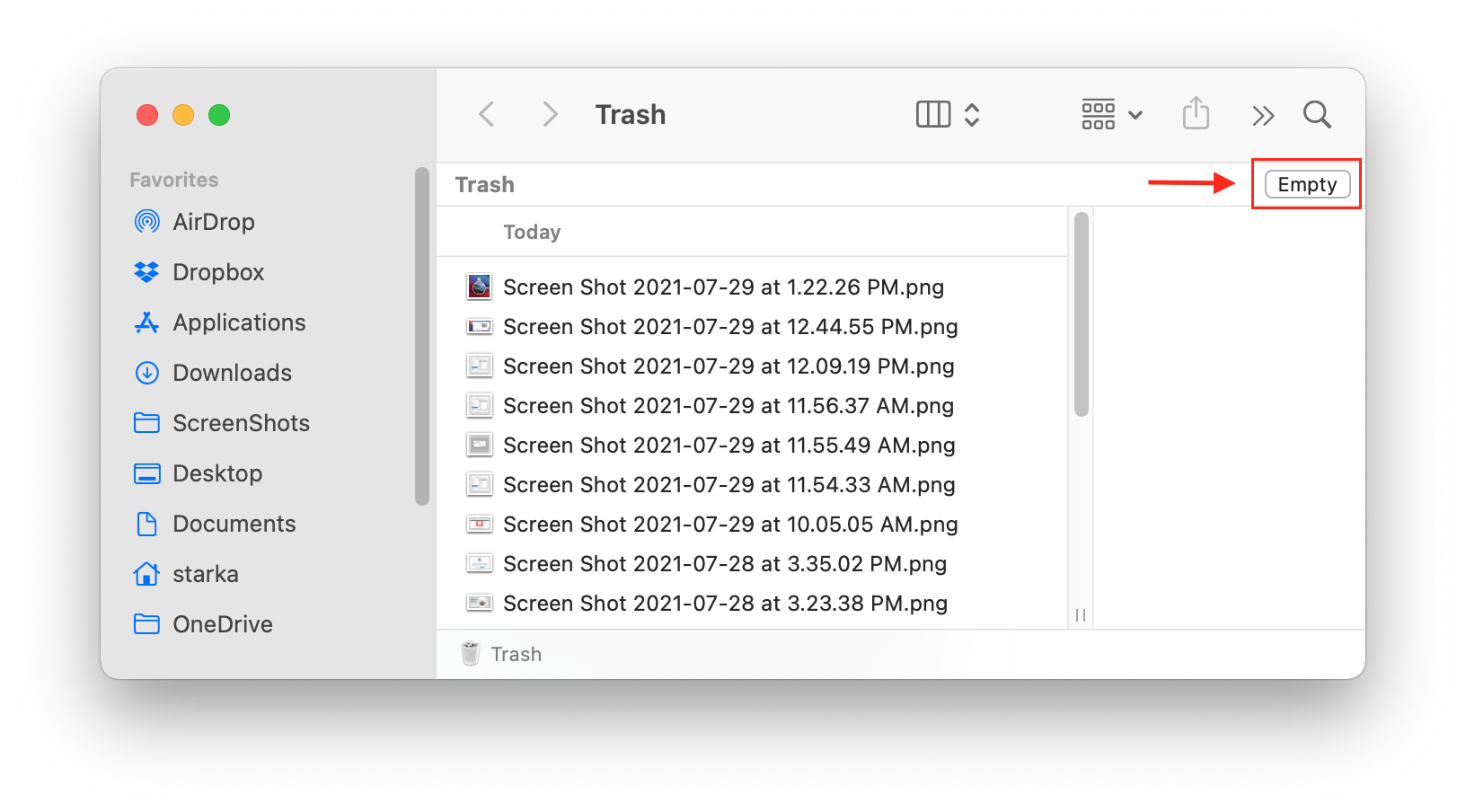
Hands remove all junk files
All previous steps can be hands washed past MacCleaner Pro. MacCleaner Pro will automatically observe all junk files and allow you to remove them in just a few clicks. The software tool volition find all junk files in just a few seconds: Downloads, Trash, Enshroud, Logs, and Linguistic communication Resources.
- Download and launch MacCleaner Pro.
- Click to make clean up on junk files.
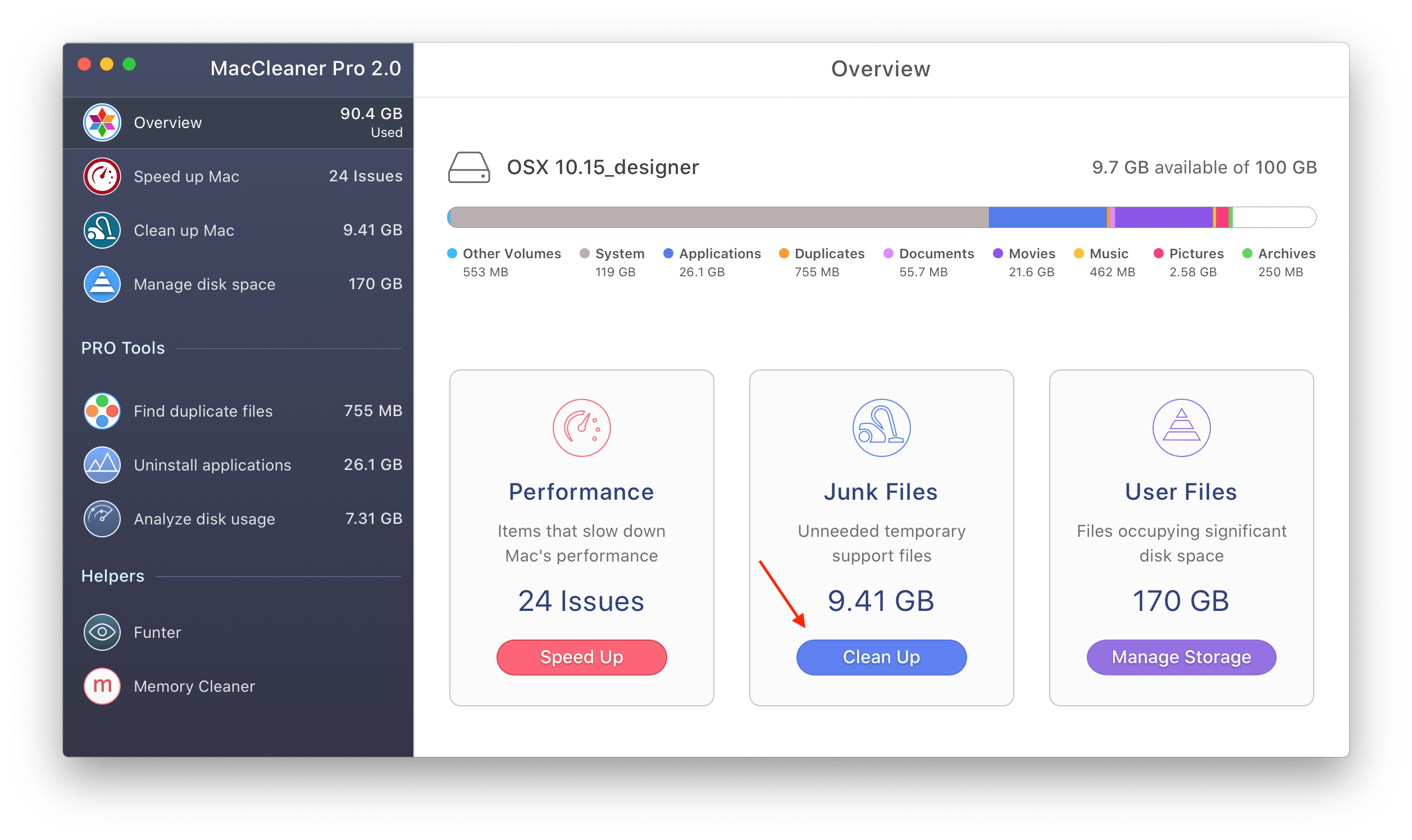
- Take a wait at the junk files and select unneeded types.
- So click on Remove and confirm removal.
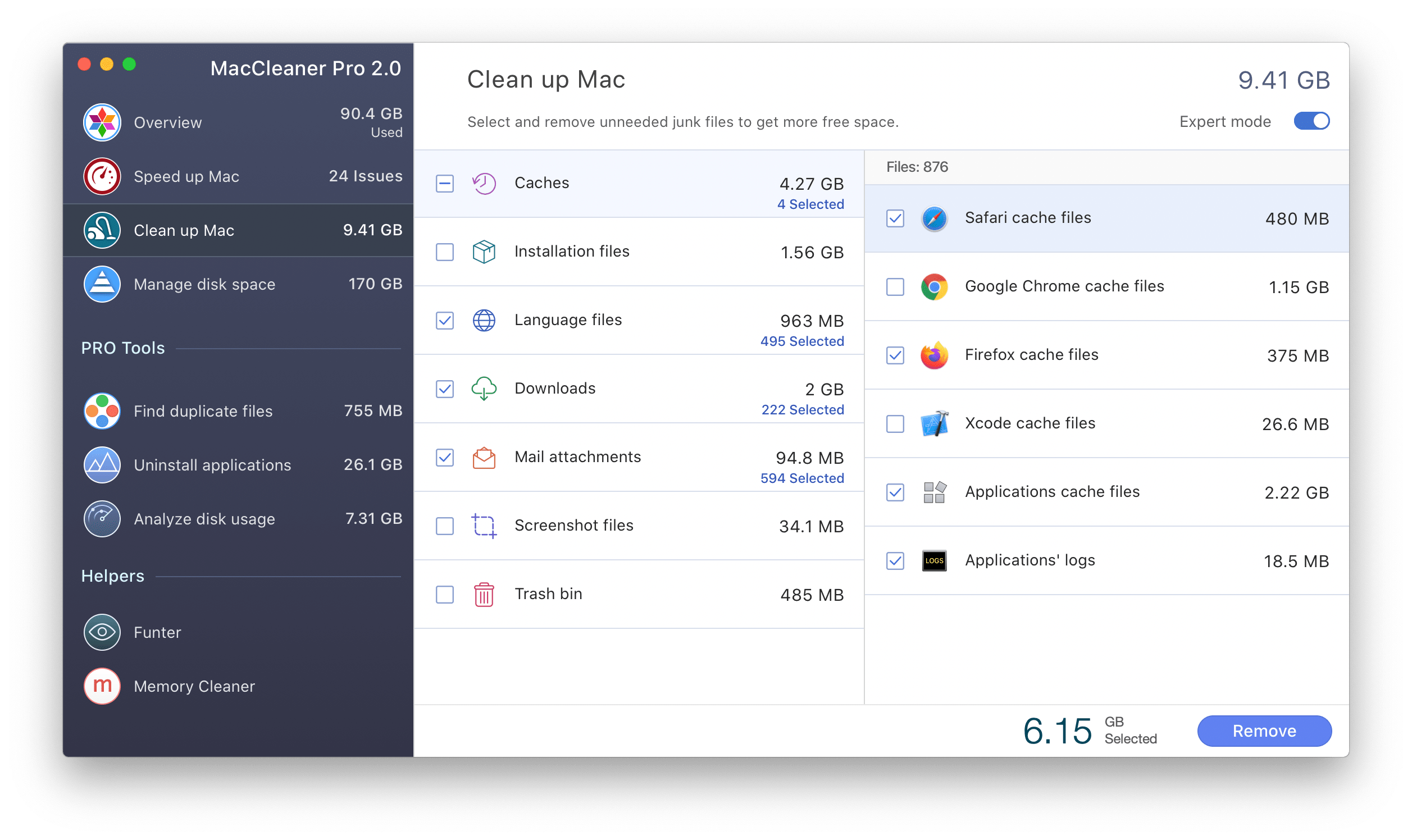
vii. Delete Old iPhone Backups
If yous regularly back upward your iPhone to your Mac, check whether you don't store onetime unneeded backup files on your disk. Backup files consume a pregnant corporeality of deejay space, every bit they include movies, music, and other large files.
Hither is how to find and remove iPhone backups from your Mac:
- Click on the Apple tree icon in the Menu Bar → select Almost This Mac.
- Switch to the Storage tab and click on Manage.
- Select iOS Files from the sidebar.
- Hither yous will find the listing of all backup files you lot have fabricated.
- To remove unneeded backup files, right-click on them and click on Delete.
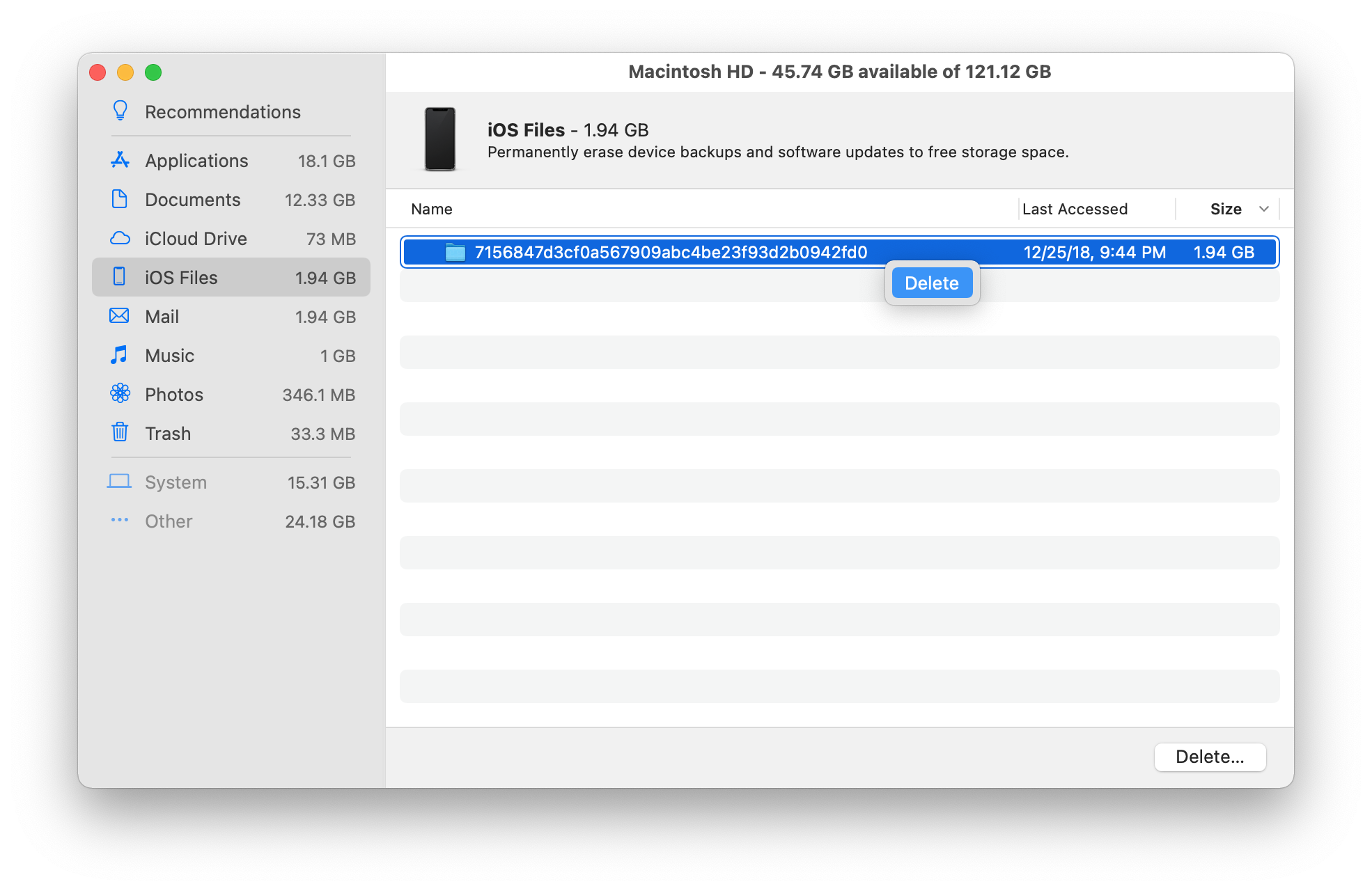
Another manner to find and remove iOS backups is to become to the following location in Finder:
~/Library/Awarding Support/MobileSync/Backup
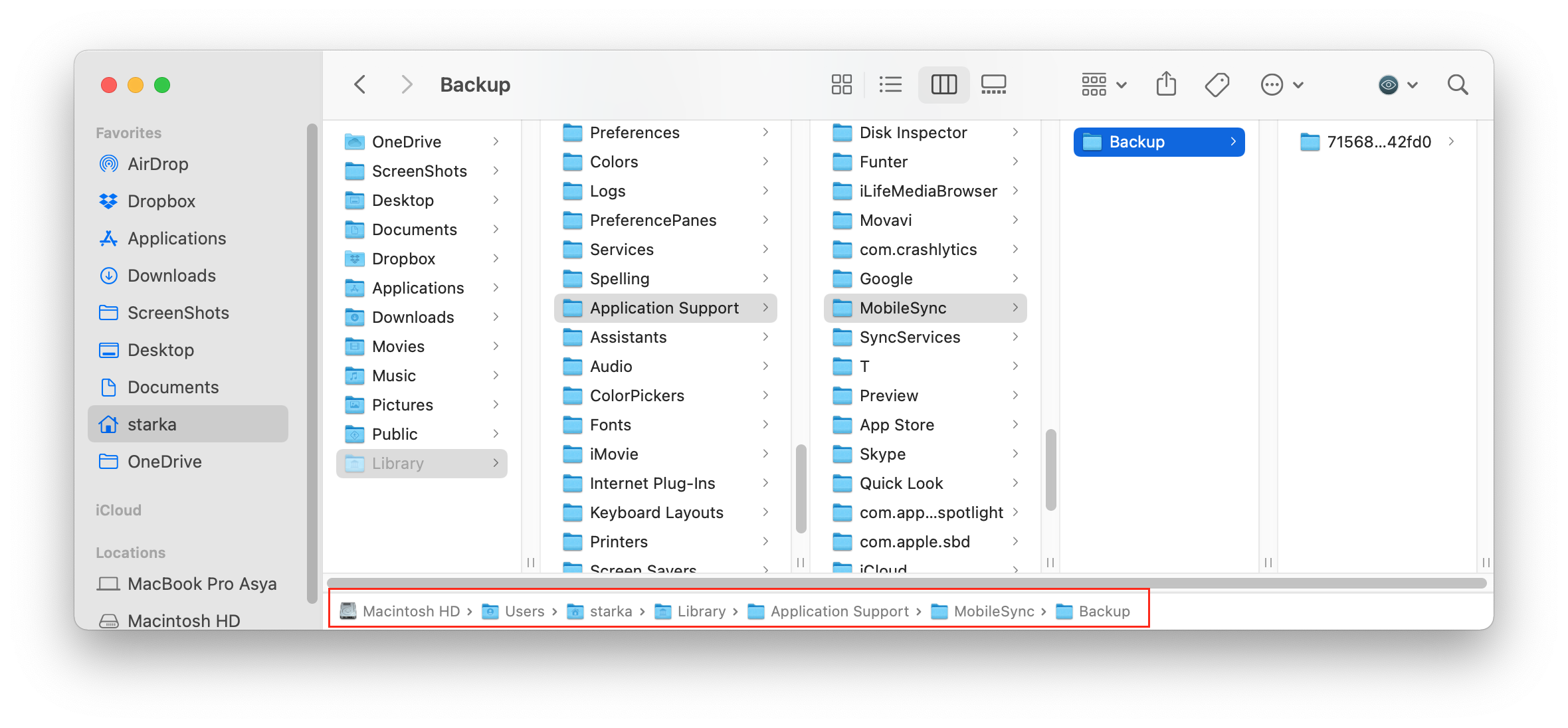
8. Uninstall Unused Apps
Cheque your Applications binder. The number of all the installed applications may sometimes exceed 100; in fact, some may not be used regularly or even at all. These apps take up a lot of space on your Mac's hard drive. So information technology's fourth dimension to uninstall such unused programs.
Merely delight note, moving an app to the Trash just by dragging and dropping it is not enough. You need to remove the app'southward cache and other service files, which are stored in the Library binder. We recommend that you read the instructions on how to uninstall apps completely or utilise a special tool from MacCleaner Pro – App Cleaner & Uninstaller. It volition assistance you lot to remove apps both correctly and completely.
Instead of manually searching for apps' service files and wasting your time, App Cleaner & Uninstaller will automatically detect all the service files and even the leftovers of previously-removed apps.
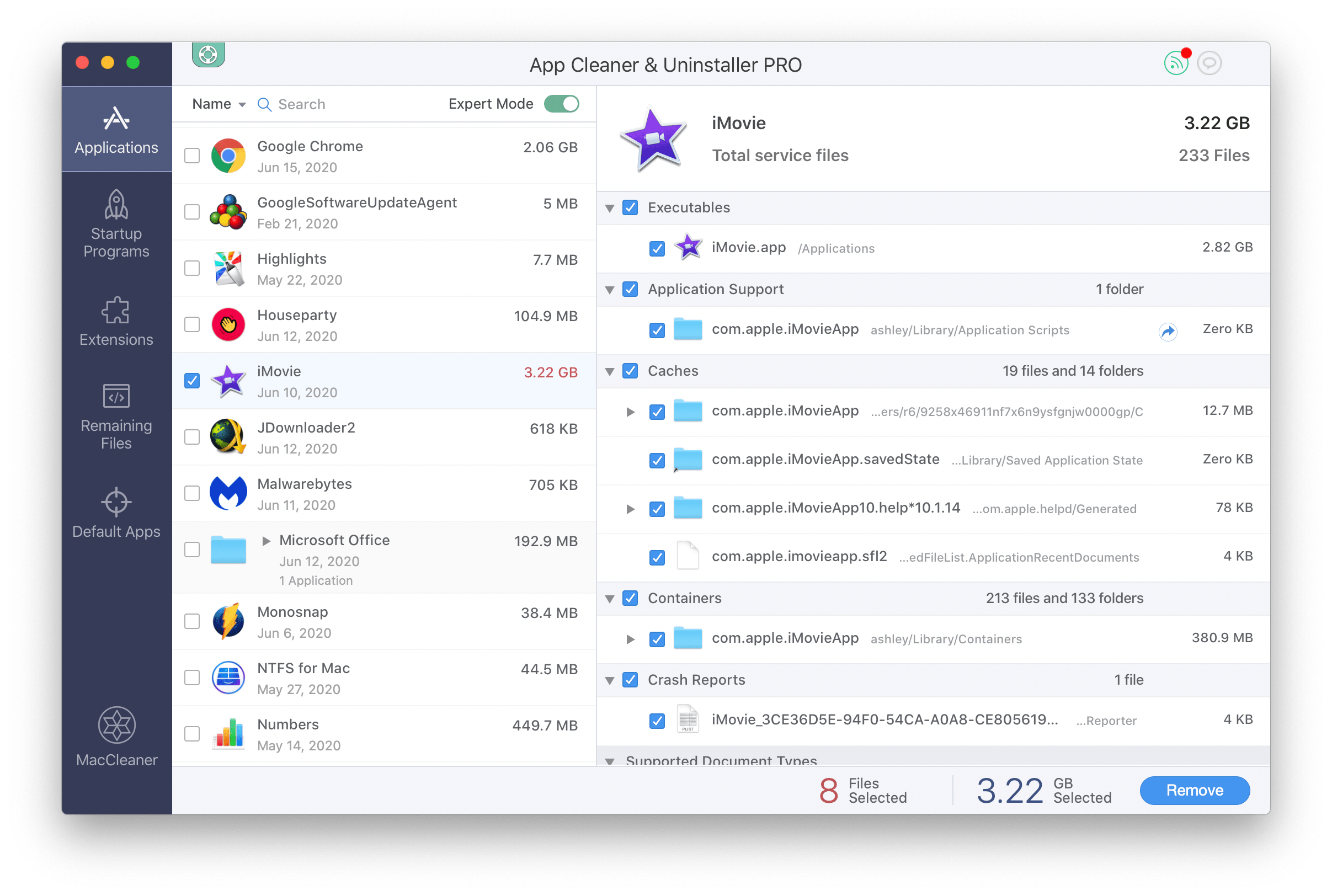
9. Remove Leftovers
Leftovers are the broken service files left after deleting the apps. Such broken service files are unnecessary and they merely take up your deejay memory, then you lot should discover and remove them.
The apps' leftovers are usually stored in the Library folder; however, they sometimes can be scattered in unlike locations all over your drive, littering your Mac. Searching for them manually seems to be an impractical chore. Fortunately, with the help of App Cleaner & Uninstaller, you tin can find and remove them with ease. The awarding finds and shows these files in the Remaining Files section.

10. Motion Large and Infrequently Used Files to External Drive
If you lot demand to complimentary upward gigabytes of data, the best way to do it as quickly as possible is to check out your Movies folder. Video content is the biggest space-eater, besides every bit sound and photo files in the Music and Pictures folders.
Too check your disk for other files with large sizes. For this, get to File in the and select .
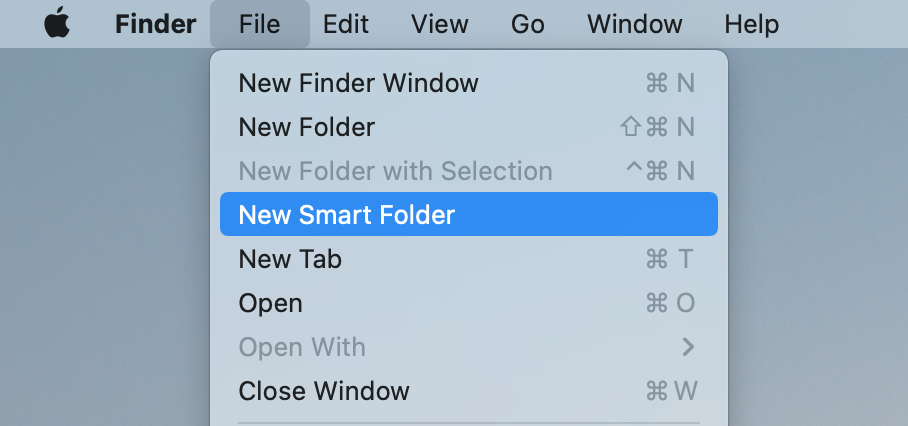
In the summit correct corner click the button and, in the parameter fields, select and set the needed file size, for example, 1GB or 500MB. Preview the largest files and remove or move unused ones.
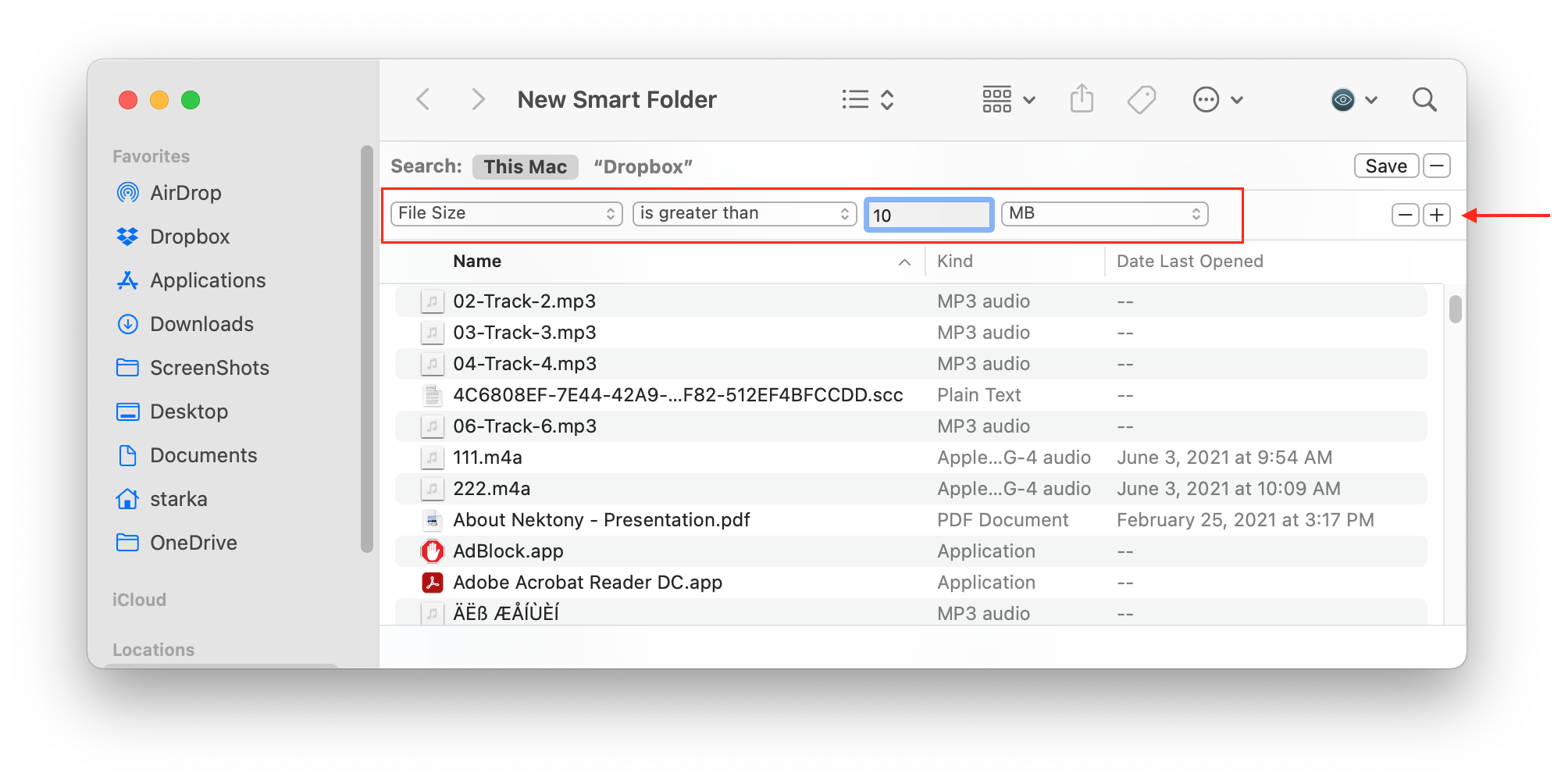
Even if yous have removed the largest files, like videos or music, yous may still have lots of other huge files you don't suspect. We recommend that you lot analyze your disk space usage deeper and find out what's taking up the most infinite on your disk. For this, y'all can employ another tool from MacCleaner Pro – Disk Infinite Analyzer.
Disk Infinite Analyzer shows you the disk infinite usage in a sunburst diagram and allows you to easily manage the biggest files and folders. The app is capable of scanning custom folders, identifying the largest files, and collecting files from diverse folders into unified "drop lists" for transfer to external difficult drives.
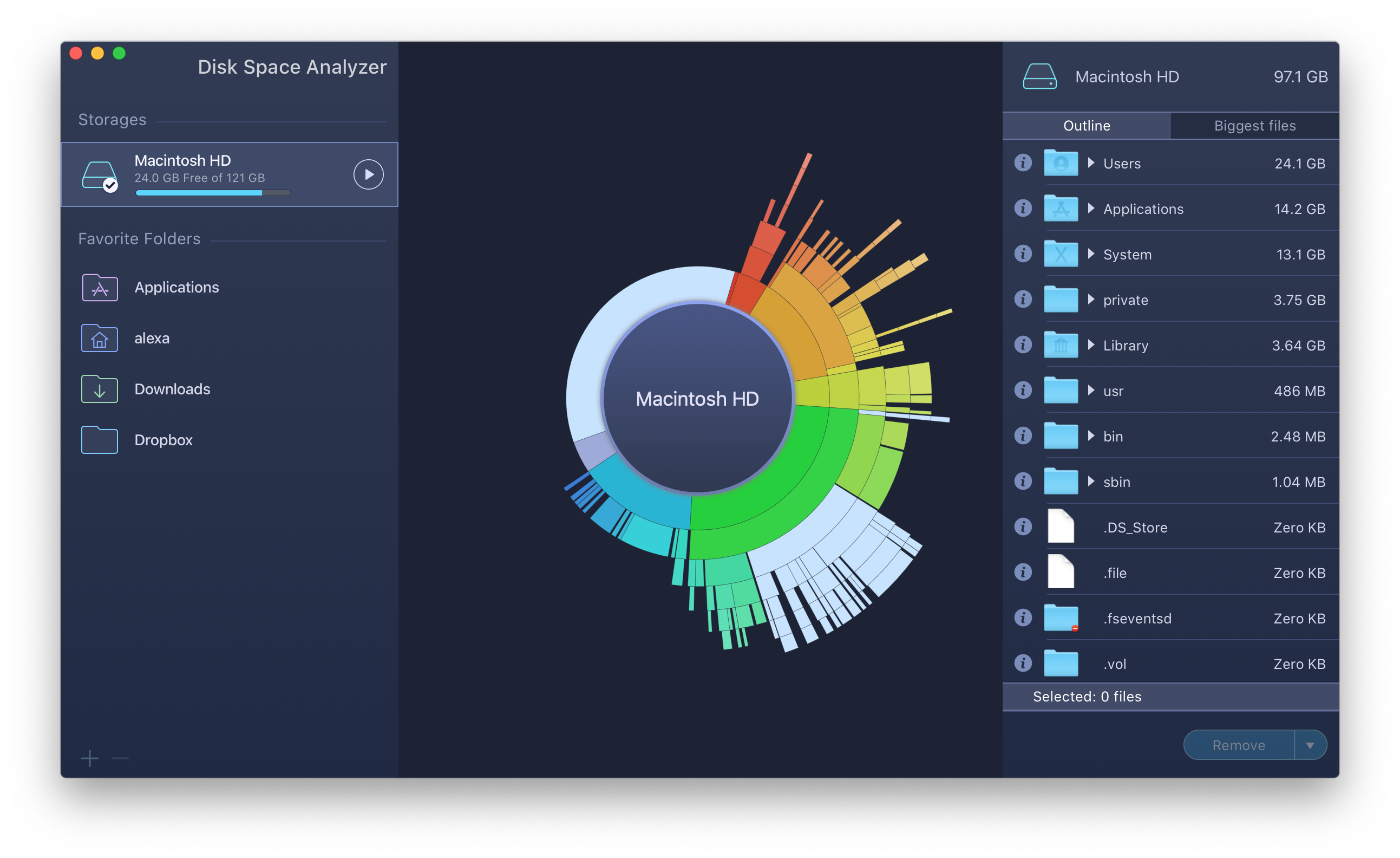
11.Use Cloud-Based Information Storage Services
Keep your big files on cloud-based storage. You lot tin can use iCloud, Dropbox, Google Drive or whatsoever other online storage. Usually all cloud storage services provide some space for complimentary.
For example, Dropbox provides ii complimentary gigabytes of free space. This means that you can move large files and folders from your difficult drive to cloud storage. Recommendation: utilise the Selective synchronization option, which allows you to delete content sent to the cloud from the hard drive. To enable this option in Dropbox, go to the Preferences → Sync department and specify the desired folders to sync.
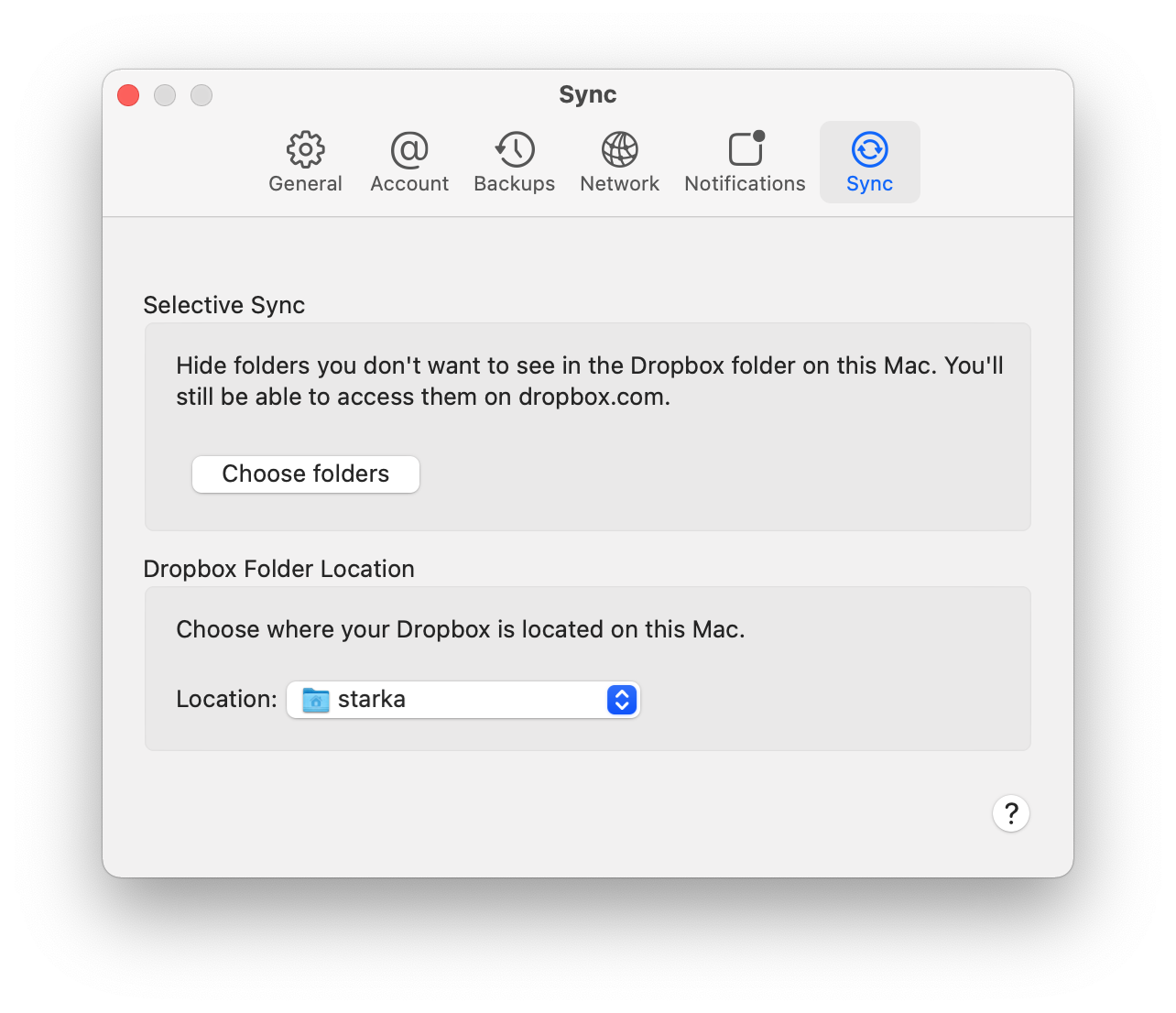
12. Delete Unnecessary Desktop Pictures and ScreenSavers
Near Mac users like skilful screensavers and do not limit themselves to the default collection. If you are a screensaver fan and take a drove of them, don't forget that they may accept upwards sizable memory space on your disk. Information technology is recommended that yous remove unneeded screensavers. For this purpose, you can again employ App Cleaner & Uninstaller Pro, which finds all the screen savers and shows them in the Extensions section.
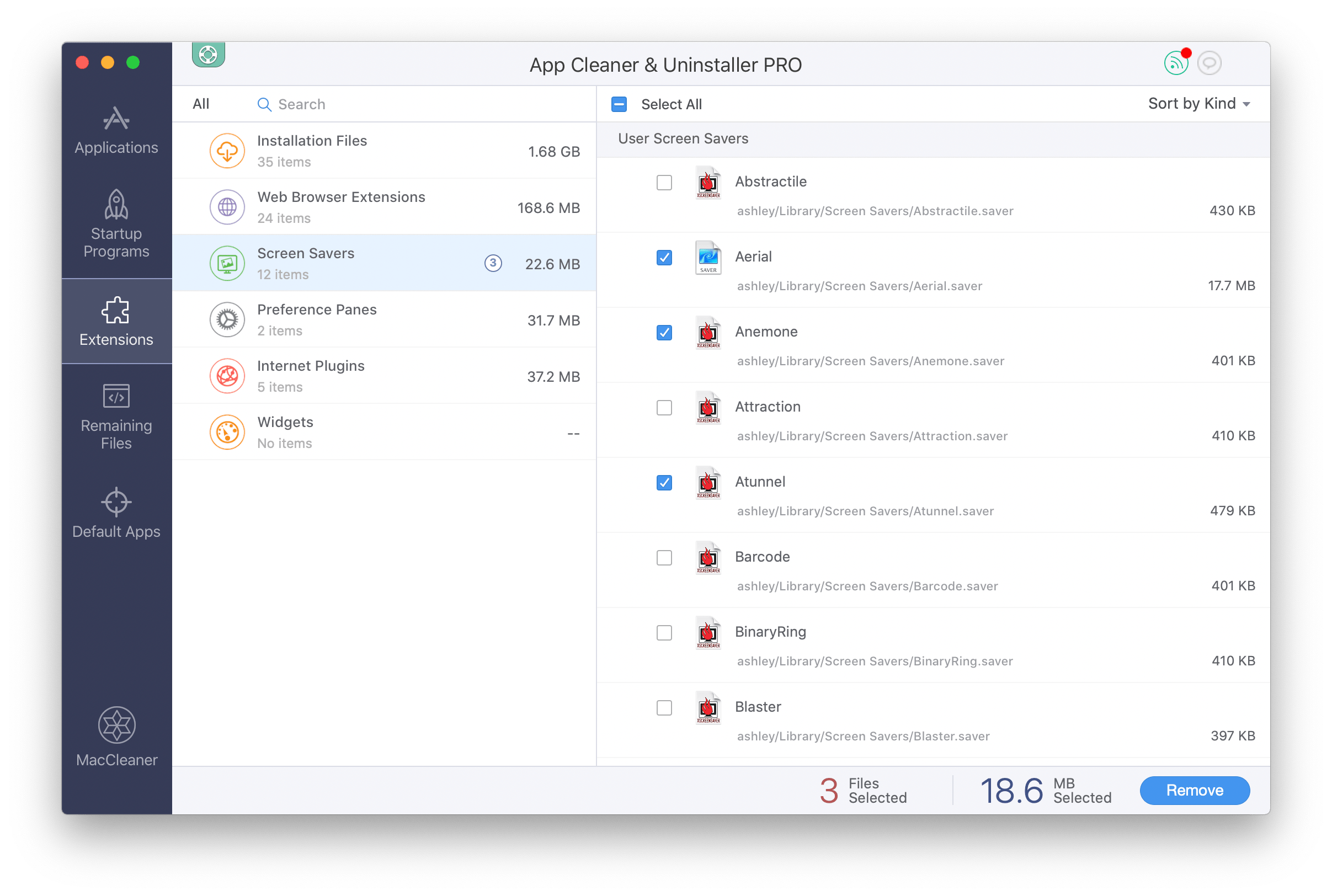
To find the desktop wallpapers, go to the following directory:
/Macintosh Hard disk/Library/Desktop Pictures
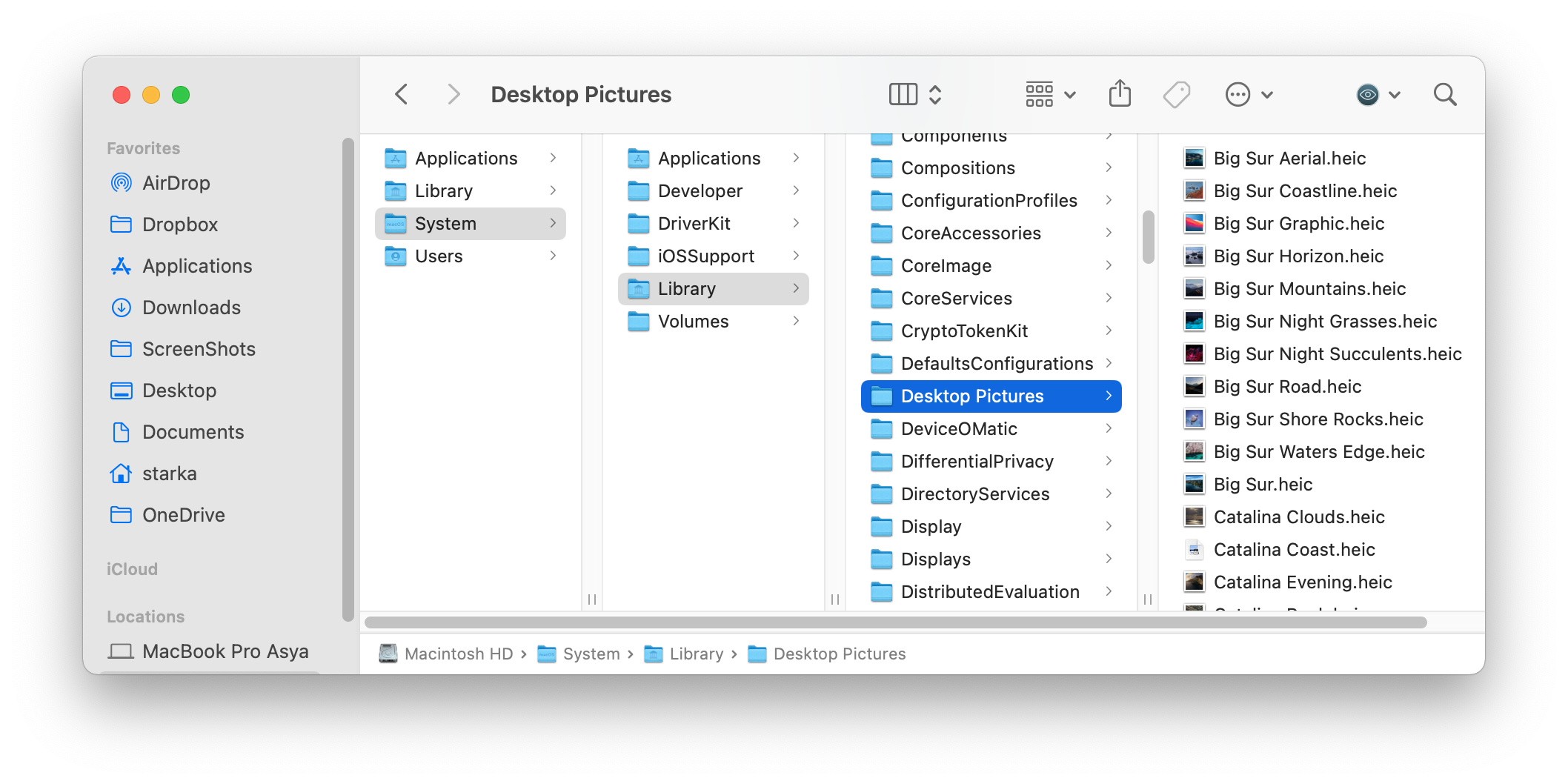
It contains 41 images of 1.xiv Gb. You are free to delete all redundant pictures.
thirteen. Find and Remove Duplicate Files
Yous may have created copies of documents or downloaded some files twice, and subsequently forgotten about it. Duplicate files have up useless disk space on your Mac. Searching for duplicates manually seems to be a long and hard process. The only thing y'all can exercise very quickly is to notice the duplicate music files in the Music Library.
To detect duplicate music and video files on Mac, follow these steps:
- Open the Music application.
- Go to its menu and click on .
- Select .
The Music app volition show yous a listing of duplicate songs. Examine the list and remove the duplicates.
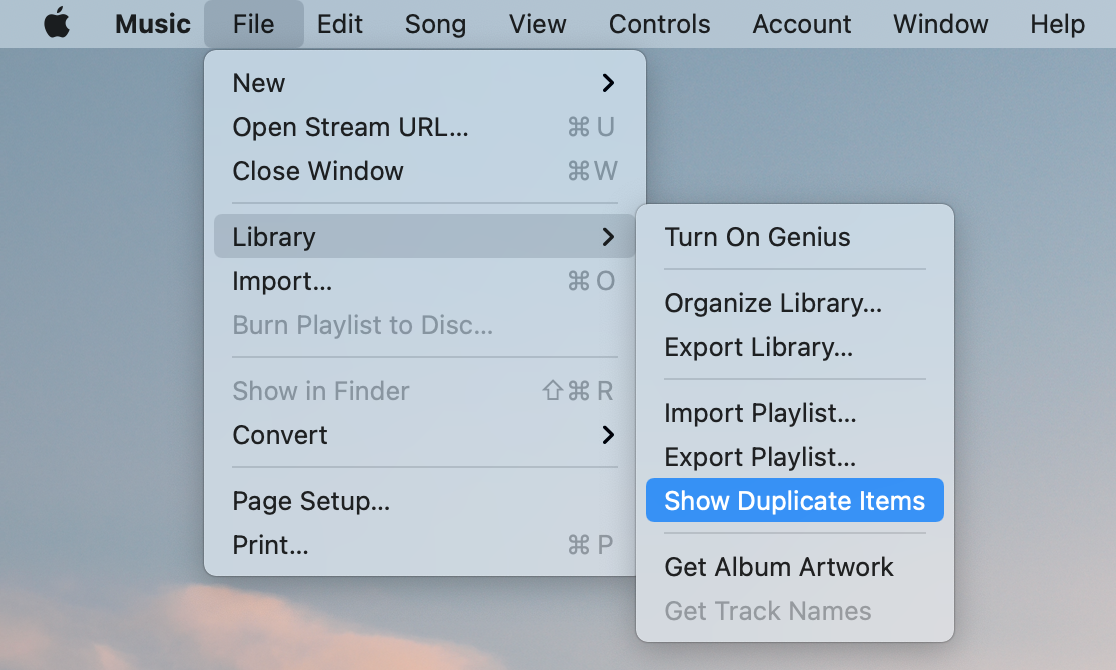
Unfortunately, for all other types of indistinguishable files, you lot volition have to look through each folder individually. This could take hours. But don't panic; in that location is a solution. We volition now discuss another way to notice duplicates, and we are certain you will detect it useful.
For other types of duplicate files, use the appropriate tool from MacCleaner Pro- Duplicate File Finder, which will help you to find and remove duplicate files in less than five minutes.
Duplicate File Finder allows you to scan whatsoever folders and drives and find all duplicate files, including videos, music, pictures, documents, athenaeum, and other duplicate files. The application finds even like folders and can merge them, making it easy to organize your files and folders.
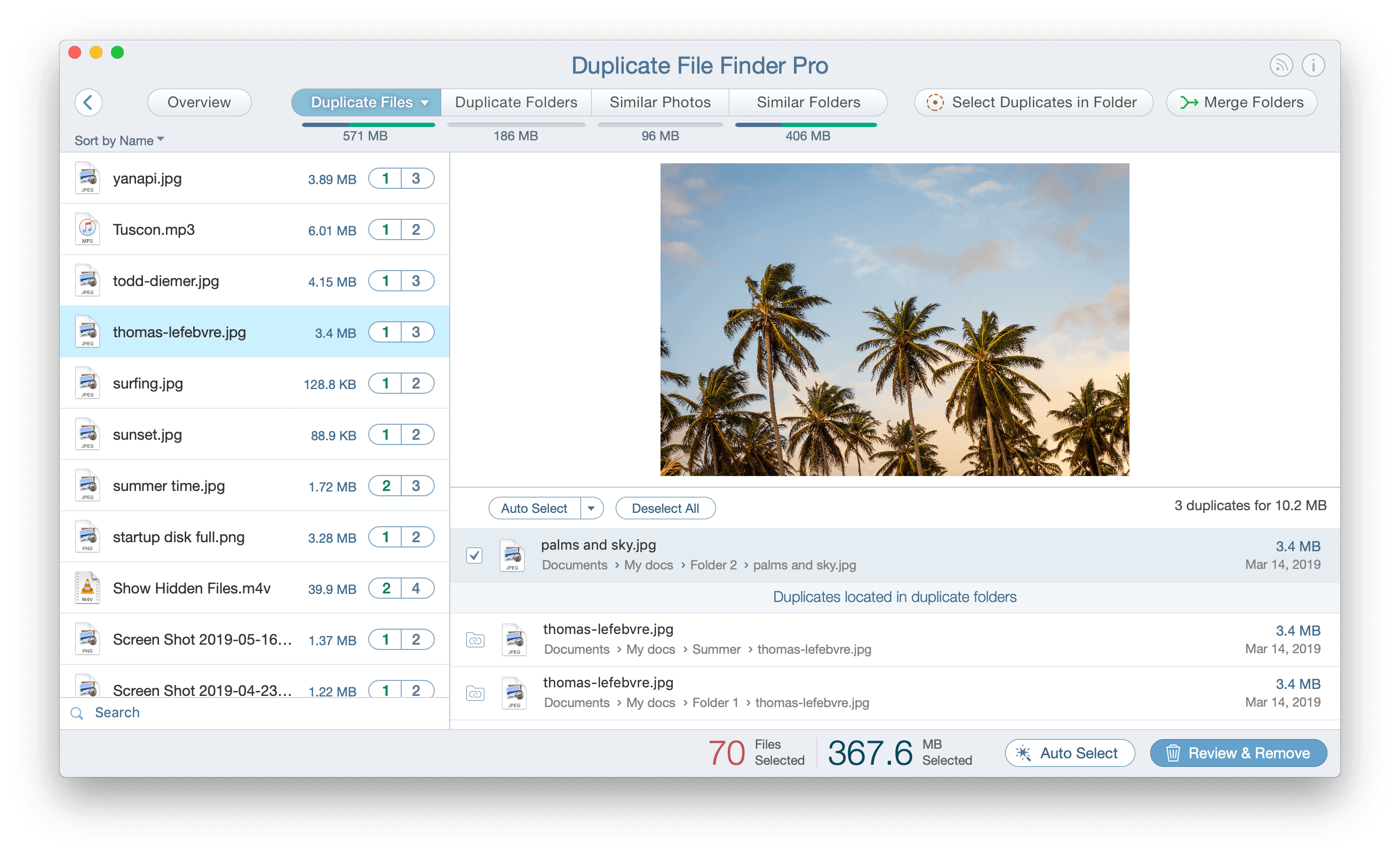
14. Articulate Ram Retentiveness on Your Mac
And, finally, it'south time to think about your RAM memory as well. This will not only create more than space on your Mac, just volition as well help speed it upwards. This is especially of import when your startup disk is nigh full and your Mac'southward speed is starting to lag. Utilise Mac Cleaner Pro when it comes to speeding up your Mac.
- Get to the Operation department or click on Speed upwards Mac in the sidebar.
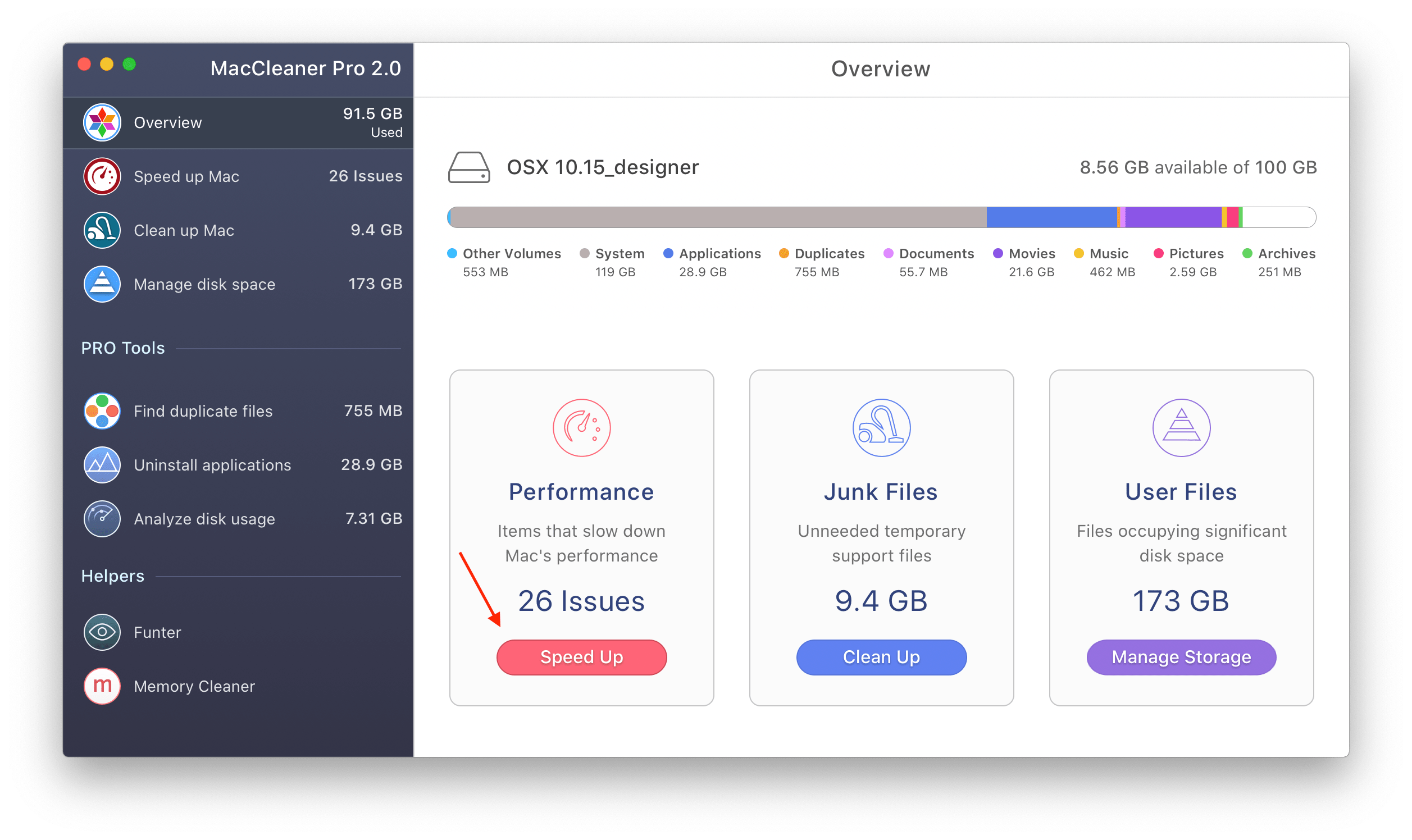
- Select Gratis up RAM and click on Review & Speed Up button.
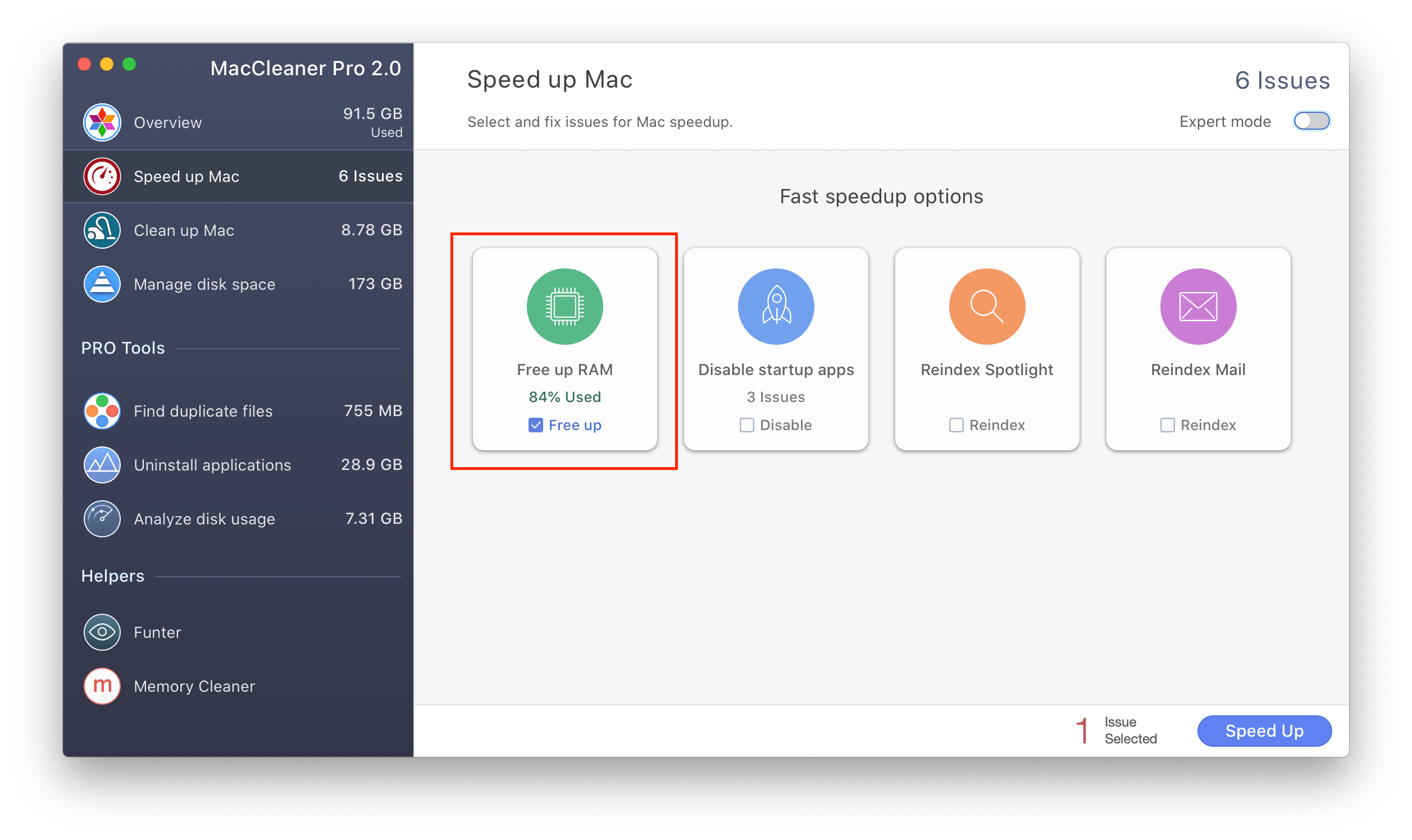
If your Mac is still slow, you can use additional speedup options in MacCleaner Pro to make your Mac run faster. Besides, launch the special tool, Memory Cleaner, that works in the background and automatically clears inactive RAM when retentiveness space is filled.
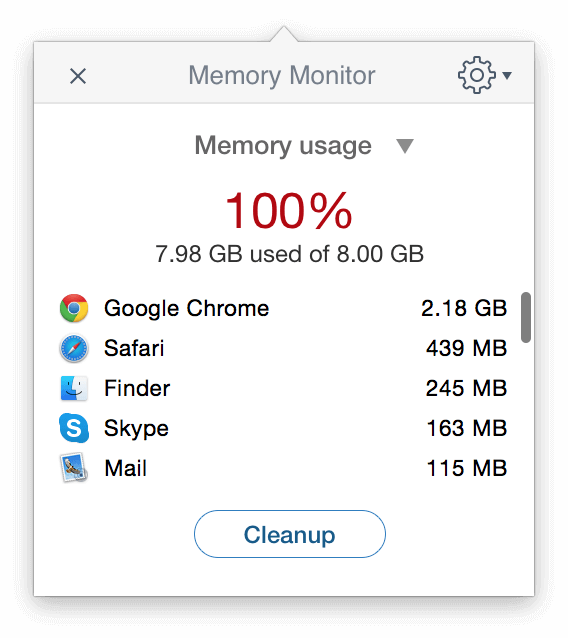
15. Restart Your Mac
One time you lot've cleaned upwards your hard bulldoze, you lot should restart your Mac. A simple rebooting of the organisation can help to free up the disk space cluttered past temporary items and cache folders. It volition also clear the virtual retention and sleep prototype files.
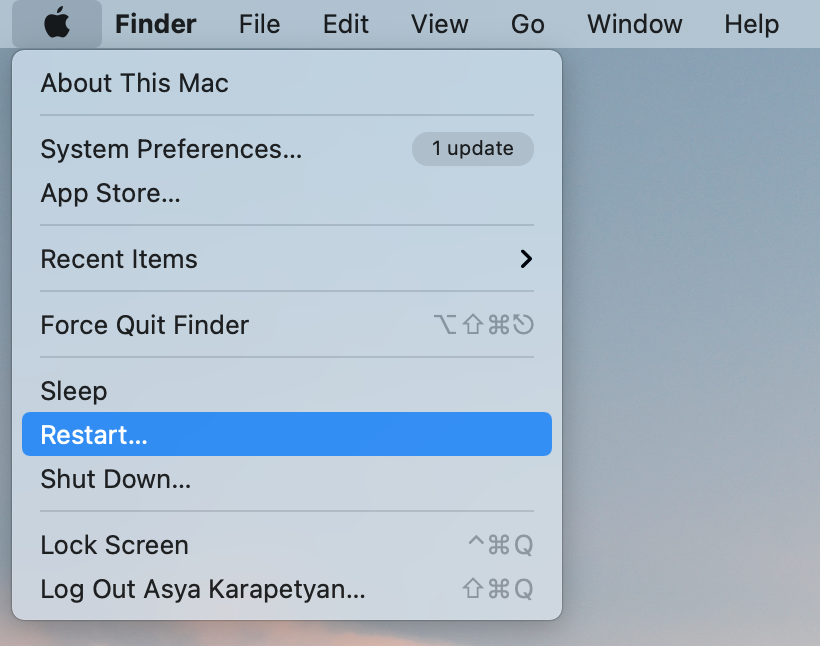
Podcast: How to fix the full startup deejay error
Determination
Well, that seems to exist all. Using these tips, you lot can delete up to 20 GB of unneeded data from the figurer. We hope these tips assist you to complimentary upwards deejay space on your Mac and ready the "Startup Disk is Full" error message. Just notation that you can clean up your Mac manually, but this may have besides much time. Too, you can utilize professional tools, which salve time and perform a quick, efficient cleanup of your hard drive.
Source: https://nektony.com/mac-startup-disk-full
0 Response to "Recently Cleared Up Space on Mac Why Is It Full Again"
Postar um comentário